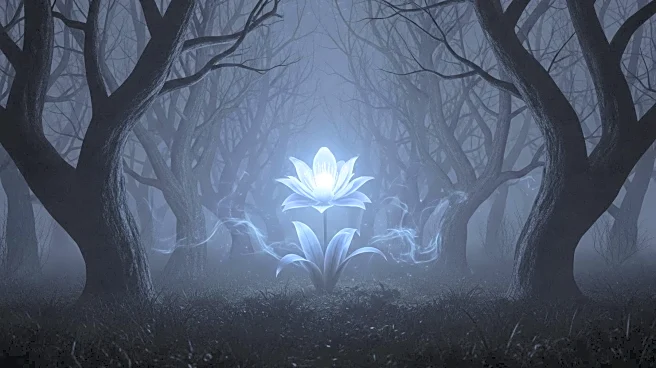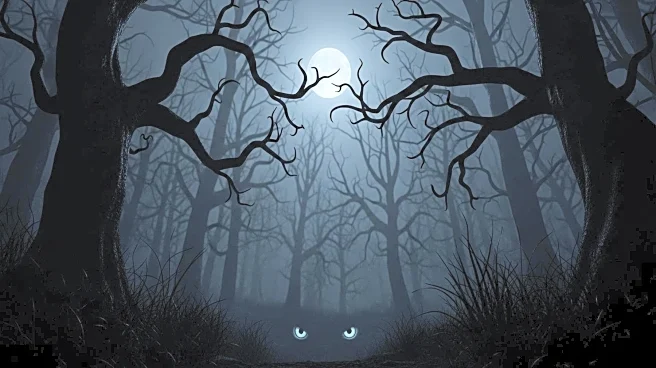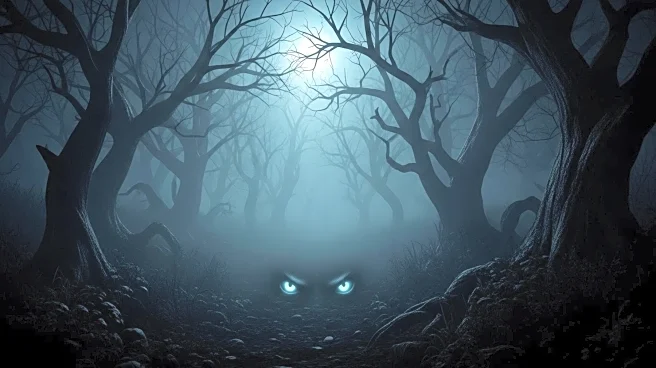What's Happening?
Blumhouse Television, in collaboration with Plimsoll Productions, is set to release a new documentary series titled 'Nightmares of Nature' on Netflix. The series, narrated by Maya Hawke, combines elements of natural history with horror, focusing on the perilous experiences of animal characters in their natural habitats. The first season, 'A Cabin in the Woods,' premieres on September 30 and follows a mouse, raccoon, and froglet as they navigate the dangers of the North American woods. The second season, 'Lost in the Jungle,' debuts on October 28, featuring an opossum, iguana, and jumping spider facing threats in the Central American rainforest. Each season consists of three 45-minute episodes, exploring the challenges and horrors these animals encounter.
Why It's Important?
The series represents a novel approach to wildlife documentaries, merging educational content with entertainment through horror elements. This format may attract a broader audience, including those interested in both nature and horror genres. By highlighting the struggles of animals in their environments, the series could raise awareness about ecological issues and the impact of human activities on wildlife. Additionally, the involvement of Blumhouse, known for its horror productions, may set a precedent for similar collaborations in the future, potentially influencing how nature documentaries are produced and consumed.
What's Next?
As 'Nightmares of Nature' premieres, it will be interesting to observe audience reactions and reviews, which could influence the production of future seasons or similar series. The success of this series might encourage other production companies to explore innovative formats that blend different genres. Netflix's decision to invest in such a unique concept could also impact its content strategy, potentially leading to more experimental programming that caters to diverse viewer interests.
Beyond the Headlines
The series may spark discussions about the ethical implications of portraying nature through a horror lens. While it aims to entertain, it also has the potential to educate viewers about the harsh realities faced by wildlife. This dual purpose could lead to debates on the balance between entertainment and education in media, as well as the responsibilities of filmmakers in accurately representing natural phenomena.











